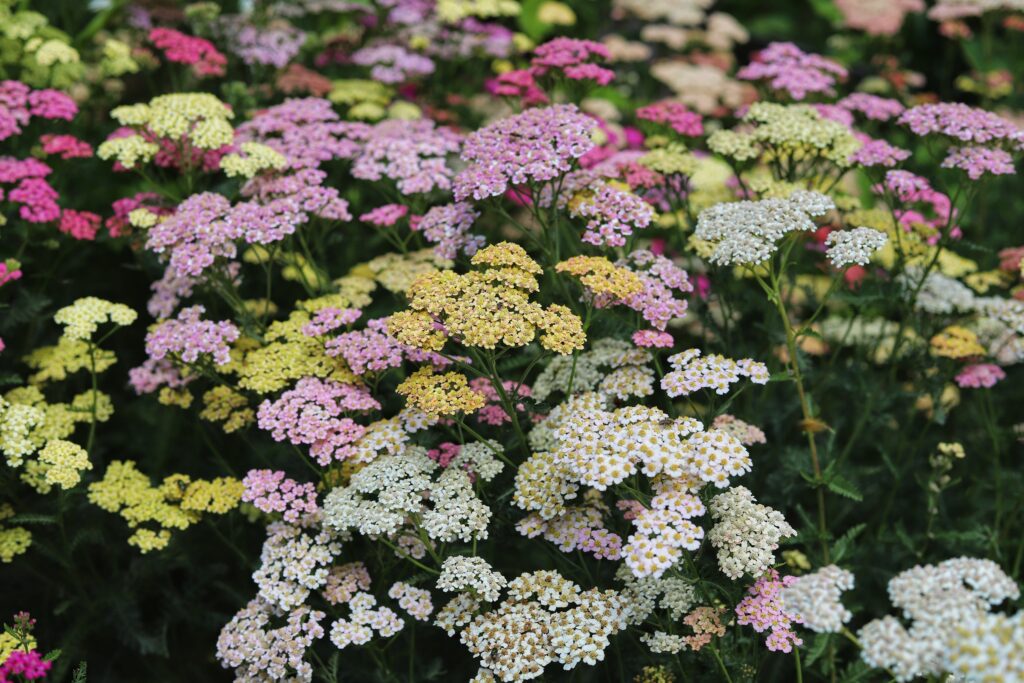If you’re looking to create a garden that is not only beautiful but also beneficial to pollinators, wildflowers are an excellent choice. These flowers grow naturally in their environment without human interference and can add a touch of resilience to your garden.
We’ll introduce you to 8 different types of wildflowers that are easy to care for and will attract pollinators to your garden. By incorporating these colorful blooms into your landscape, you can create a thriving ecosystem that supports both wildlife and plant life.

Black-Eyed Susan
Black-eyed Susans are easily identifiable with their bright yellow flower heads resembling daisies and dark brown centers. They are named after their “black eyes”. These wildflowers bloom from early summer to fall and can grow up to 3 feet tall. They are a great addition to any garden and attract butterflies and bees.

Milkweed
If you want to attract monarch butterflies to your yard, you should consider planting milkweed. Monarch butterflies rely on milkweed as the sole host plant for their caterpillar, providing necessary food and shelter for the larva to develop into butterflies. In addition to its practical benefits, milkweed also boasts clusters of delicate, pale pink flowers that add aesthetic appeal to any garden.

Coneflower
Coneflower, also known as Echinacea, is a popular perennial flower that blooms all summer long. These pinkish purple daisy-like flowers make great companion plants with black-eyed Susans. They are super easy to grow, adding a bright patch of color to your yard throughout the season. Consider planting Coneflowers in your garden to enjoy their beauty and low maintenance.

Yarrow
Yarrow is a plant with delicate, white flowers that grow in clusters. The leaves are feathery and fern-like, and the plant can spread out to act as ground cover. Blooming from April to October, yarrow offers plenty of time to enjoy its attractive features. The bloom stalks can grow up to 3 feet tall, making it a standout addition to any garden.

Foxglove
Foxglove is a stunning plant that features tall spikes and rows of vertical bell-shaped florets. However, it is important to note that this plant is highly toxic and can be extremely dangerous if ingested by humans or pets. So, exercise caution when planting this beauty in your garden.

Phlox
If you’re in search of a ground cover that doubles as a wildflower, you can’t go wrong with phlox. These plants produce small, colorful flowers that can quickly brighten up any garden and fill in empty spaces in the soil.

Wild Columbine
If you’re looking for a unique and eye-catching addition to your garden, consider planting wild columbine. This North American native plant boasts delicate-looking, lantern-like flowers that hang down with upward-pointing red spurs and bright yellow stamens. Don’t let its appearance fool you, though – this plant is a hardy perennial that can thrive in a variety of conditions.

Evening Primrose
Evening primrose is a plant that is commonly used for its oil extracted from the seeds. The oil is known for its therapeutic properties and is used to treat various ailments such as PMS symptoms and eczema. The plant produces bright yellow, citrus-scented flowers that bloom in the late afternoon or evening, giving the plant its name. It can also add a pop of color to your garden. Consider adding evening primrose to your garden if you are looking for a plant with both aesthetic and medicinal value.






